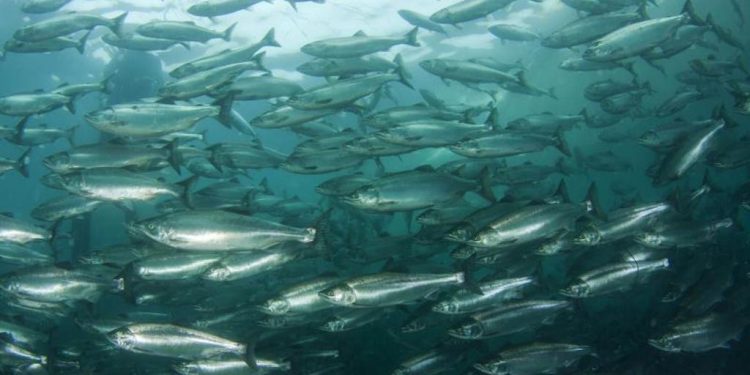All but the most resilient marine species off the US West Coast are likely to be vulnerable to climate change, according to a new NOAA Fisheries assessment. This aims to help inform fisheries management and species protections as the climate changes in the coming decades.
The assessment found that nearly all commercial fish stocks overseen by the Pacific Fisheries Management Council are vulnerable to climate change. Species with complex life histories, long life spans, or of high commercial value are the most vulnerable to the effects of climate change in the California Current.
‘We are looking forward, and we see that changes in these species may be the rule rather than the exception,’ said Michelle McClure, lead author of the assessment who did much of the work while at the Northwest Fisheries Science Center in Seattle.
‘The goal is to anticipate the changes and make more climate-informed management decisions, and this assessment should help.’
Scientists are currently documenting the shift of marine species north or into deeper, cooler waters, as they follow their preferred temperatures. Such shifts are likely to become more widespread as climate change continues. Depressed oxygen levels may also become more common and affect bottom-dwelling species. These species cannot move very far or fast to avoid these low-oxygen areas.
Most species sensitive to climate change
Species were scored as low, moderate, high, or very high for sensitivity to climate change. Scores were based on each species’ life history, exposure to climate change, and overall ability to cope with expected changes.
Of the 64 species in the new analysis, 67% were at least moderately vulnerable to climate change, while 23% were highly or very highly vulnerable.
‘This assessment is based on our best expertise and science, and builds on earlier knowledge about the sensitivity and habitat needs of individual species,’ said Melissa Haltuch, research scientist at the Northwest Fisheries Science Center at the time of this study and coauthor of the assessment.
Scientists from NOAA Fisheries Northwest and Southwest Fisheries Science Centers worked with partners from the University of California Davis and Santa Cruz, and the US Geological Survey to conduct the multi-year assessment. This is part of a series of Climate Vulnerability Assessments that NOAA Fisheries conducts to better prepare for and respond to rapidly changing ocean ecosystems.
The first, the Northeast Fish and Shellfish Climate Vulnerability Assessment, was published in 2016. Vulnerability assessments for fisheries-related species in the Eastern Bering Sea, West Coast salmon, and fisheries-related species in the Pacific Islands region followed it.
Work is continuing on completing Climate Vulnerability Assessments for fisheries-related species in the South Atlantic and the Gulf of Mexico. Additional assessments are being completed for marine mammals in the Northwest Atlantic, Caribbean and Gulf of Mexico, and in the Arctic and Pacific. A global sea turtle assessment is also underway.









